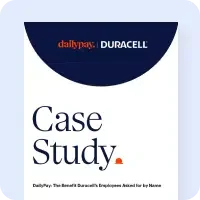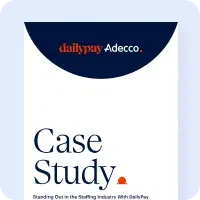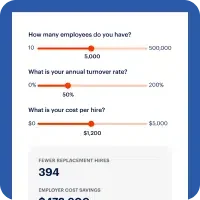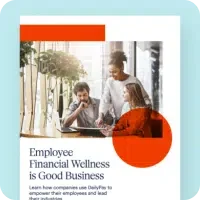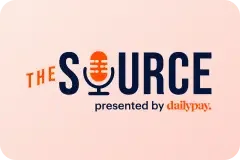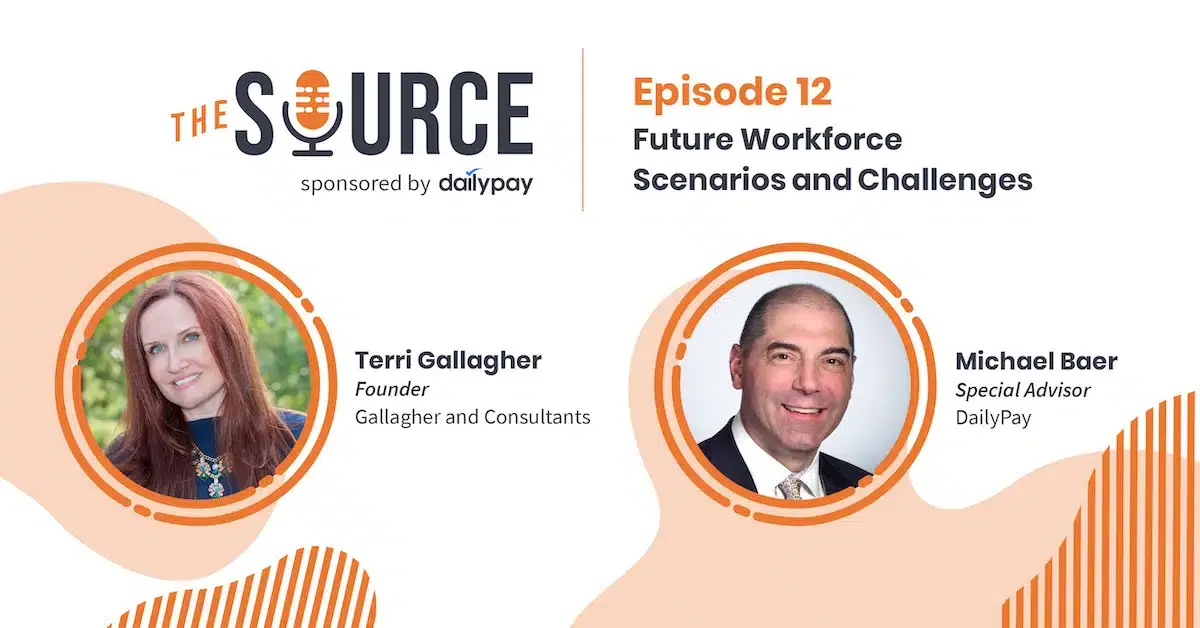What will be the makeup of workplaces in the next five years? Certainly, new generations of workers are developing skill sets that leverage technological innovation, and they have high expectations about their careers. At the same time, businesses are evolving in how they attract talent and manage their workforce for optimum performance. Finally, what can we expect from government as it recognizes that workplace requirements need to be modified?
About Our Speakers

Terri Gallagher is founder of Gallagher and Consultants, a WBENC Certified Gig Workforce Solutions Company. She is a workforce futurist.
For more than 20 years’ she has made it her personal mission to elevate the On-Demand Workforce industry. Terri has written on subjects like Technology and The Future of HR, and is an expert on workforce management.
With her firm, she has developed and trademarked a workforce ecosystem model of delivery that includes best of breed talent, technology, and alliance partners to provide contingent workforce and multi-talent supply solutions.

Michael Baer is the host and executive producer of The Source podcast. Michael previously oversaw domestic and international payroll news and analysis at Bloomberg Tax, previously BNA.
In a career spanning three decades, Michael transformed the role of managing editor, becoming an information services leader who managed every aspect of world-class global products and platforms, while continuously increasing revenue and achieving market-best customer satisfaction. He directed a team of editors and writers who were charged with translating complicated tax and labor laws into English so non-lawyers could easily understand and apply them, and was integral in organizing and placing that content on easy-to-access web platforms, resulting in the highest net promoter scores the company had seen for any of their offerings.
Michael has been a frequent public speaker for conferences and webinars, and now is the host of The Source, sponsored by DailyPay. Michael joined the DailyPay team in 2019.
In this podcast you will learn about…
- The dynamics behind a changing workforce, expectations of businesses and workers
- How leveraging technology and its applications have impacted work so far and in the future
- Potential changes from states and the incoming Biden administration on addressing issues of worker status
About this podcast and transcript:
Welcome to The Source, by DailyPay. The definitive destination for timely and informative regulatory updates and issues in the on-demand pay industry.
The Source is brought to you by DailyPay, the industry leading provider of the DailyPay benefit and pay experience. This material is for general information only, and the views expressed herein reflect only the views of the participants.
This program should be considered marketing material, and should not be relied on as legal, tax, accounting, or regulatory advice.
And now, let’s welcome our host Michael Baer.
Michael Baer:
Hello everyone, and welcome to The Source. The Source is sponsored by DailyPay, and it provides insights into active and upcoming legislation impacting the on demand pay industry, and with special guests, we help clarify issues surrounding early access to pay, and the pay experience. Today, we welcome Terri Gallagher, founder of Gallagher and consultants, a WBENC certified gig workforce solutions company.
She is a workforce futurist, and for more than 20 years, she has made it her personal mission to elevate the on demand workforce industry, and has written on subjects like technology and the future of HR. She is an expert on workforce management, and she has developed and trademarked a workforce ecosystem model of delivery that includes best of breed talent, technology, and alliance partners to provide contingent workforce and multi-talent supply solutions. Welcome, Terri.
Terri Gallagher:
Mike. Oh my gosh, thank you. I’m going to have to bring you with me for every presentation. That was wonderful. Thank you. I feel very welcome.
Michael Baer:
All right, well thank you for being here. Now, why don’t we go ahead and get started. The first question is more about the overall environment we are experiencing now in the workforce. So, Terri you’ve developed practical solutions for businesses to attract and retain talent, and provide flexibility in these arrangements that provide positive outcomes to both workers and businesses. So, what have you observed are some of the key dynamics behind this? And why don’t we start with the workers. How have their expectations changed and evolved to get to where we are now?
Terri Gallagher:
My favorite topic, the workers. The humans. There’s been a lot of change. I think that there’s a lot going on with the balance of power. The balance of power is really shifting more towards the workers, versus top down, right? What motivates these workers? How do they want to work? Where do they want to work? Workers out of either need or want are embracing digital workforce platforms, which we’ll talk a little bit more about, and the gig economy as a valid income stream, right? Not only because they want to work on their terms, but because some of them have had to do that during the recession.
Terri Gallagher:
I was just reading an article about AirBNB. They’ve come roaring back to life. They were going to go IPO, and everybody’s like, “Oh my god, AirBNB’s dead in the water.” And now they’re coming back to life because people are looking at the remote workforce. They want to work in different places. You’ve got people giving up their apartments.
Terri Gallagher:
So COVID, while it’s been very traumatizing, and there’s been a lot of things that have come out of it that have been very difficult, it’s really been this really great perfect storm of things to disrupt some models that maybe didn’t work, and generationally, there’s something interesting going on, and you and I talked about this, because this is our age range, but I wrote an article about this around the talent economy abolishing retirement, and that 30 percent of people age 65 to 74 are going to be in the workforce, and they want that flexibility.
Terri Gallagher:
And their skillsets are very high in demand because there’s a lot of them leaving the workforce, and they’re retiring at record rates. So they are the fastest growing in this gig economy. Per Upwork’s freelancing in America, a third of people over 50 have freelanced in the past. Millennials who are highly misunderstood, I will never bash millennials ever. I think that they’re wonderful, I just think they’re very misunderstood, but they coined the term side hustle, right?
Terri Gallagher:
So, almost half of them are using gig workforce platforms to find work. They want that flexibility, much like the Gen Xers, that autonomy of purpose, and that social entrepreneurship is very attractive to them. So, I think I’m going to take a breath here, too, but those are some provocative statements, particularly with ageism and the over 55 sect being high in demand. The highest in demand in the gig economy right now, I’m curious if you’ve got an opinion on that? Not that I’m calling you out on your age, but I know that you do.
Michael Baer:
No, that’s all right. So, tell us a little bit about the expectations of this new workforce, from you mentioned some about technology, and the tools, and also what folks are expecting you said working remotely and things like that?
Terri Gallagher:
Right. Well, there’s this definite, it’s expedited things, right? So there’s this definite instant everything now. If a Uber driver wants to make a few extra bucks to buy a kid’s birthday present, they can jump in the car, and they can drive. They can get paid right away. Looking at how we get things, Amazon and DoorDash and Uber, we’re very used to this instant everything.
Terri Gallagher:
And so, when you look at a lot of these workers that are coming in as independent consultants, or working on some of these on demand workforce platforms, to tie in to what you folks do, they’re paid instantly, right? And so why can’t this translate into this new workforce environment where we’re now accommodating the worker and moving back away from this patriarchal top down to what’s going to motivate the worker?
Terri Gallagher:
Do they have to come back to work? They don’t feel safe doing that. How can we set up remote workforces for them? So, I think that there’s a huge opportunity for companies to start thinking about this approach when it comes to pay, when it comes to that instant everything, that we need to really accommodate.
Michael Baer:
And that leads me into, we just talked about the workforce dynamics and the changing. That leads me right into okay, we have now businesses. Let’s move onto businesses, and how are they evolving in their workforce management practices? How have they been able to adopt and change to attract talent and manage their workforces for optimum performance now?
Terri Gallagher:
Well, to put it directly, fits and starts, no one was prepared for how radically the workforce landscape has changed, right? We’ve had basically 10 years of digital workforce transformation in three months, and the workforce has become more distributed, like we talked about, across several channels and technology platforms. Not everybody wants a permanent role, and so the employers are really working, companies are really working to embrace this alternative workforce as the norm. Some faster than others, right?
Terri Gallagher:
Some companies are embracing that faster than others, but also looking at workers’ ability to provide outcomes versus titles an experience right? The interesting thing is, is that HR and talent acquisition, the ones that are really tasked with this, that are really the nerve center, are really struggling with how do we accommodate this new work force, and still fit that into some of these older paradigms? These old approaches around recruitment and sourcing and workforce planning.
Terri Gallagher:
A lot of the processes and technology is still very rooted in some of these older paradigms, and so we’re now permanent a more remote workforce. I don’t think we’re ever going to go back to where we were, right? There’s some hybrid models about how people are going to work remotely, and I think that there’s this recognition that there’s a need to adjust practices and businesses have really fallen behind in using some of these tools to attract and maintain talent, right?
Terri Gallagher:
In sourcing and recruitment and attraction, they’ve got these older systems, and there’s a lot of people, a lot of companies out there that still view this talent as not loyal, or secondary to perm talent, and so I think for HR and talent acquisition, and companies to move forward, you’ve got to take HR, and god bless HR and talent acquisition, because they really are having to probably pivot the fastest, and they’re moving away from risk management, which is what you guys deal with, and performance reviews, to being that nerve center for keeping employees sane.
Terri Gallagher:
For adjusting systems intact for remote working. Companies are going to be using a much higher percentage of nontraditional workforce in 2021. We talked about the post-COVID growth in entrepreneurs and ICs. A lot of people that were fired or let go, especially those over 55 were like, “I’m going to create my own company.” So there’s this huge burst of entrepreneurial activity, unprecedented, and then diversity inclusion is also another central focus.
Terri Gallagher:
So, in a nutshell, if they wanted the silver bullet, or how to put the framework around moving forward, it’s really going to be a few things. It’s going to be about remaking the culture of the organization, and changing the definition of success to focus on attaining outcomes over generating new ideas or managing headcount. It’s about rethinking the employee value proposition, coming to them the way that they want to work. Helping employees at all levels understand how they can benefit from arrangements made from these new platforms.
Terri Gallagher:
Redefine work into different components that could be tackled internally or externally, right? Reassess the capabilities with the organization in order to tap into underutilized talent. Upscaling and rescaling is really important, and then it’s really about rewiring those organizational policies and processes. And a lot of companies are just, they’re not there yet, but that’s really what needs to happen in 2021.
Michael Baer:
Okay, well I mean what I was hearing from you in a lot of ways is that companies reactions to, let’s just say you mentioned it early in the program, some empowerment of the workforce. In other words, the employees and workers are wanting to call more shots about their work experience and things like that, and the reaction of companies is like you said, it’s been mixed I think.
Terri Gallagher:
Absolutely.
Michael Baer:
But, moving on, let’s talk more about technology if we could. How have the leaps in technological developments… and I know you had mentioned to me when we talked earlier about how the pandemic has really advanced, let’s just say, the usage of technology in many workplaces. But, how have the leaps in technological developments played a part in all this changing workforce dynamics? All this providing, allowing employees and workers to have more say in what they have as a work experience.
Terri Gallagher:
It’s interesting, there’s a lot of polarity around the technology question, right? So, on the one hand, much of the on demand workforce is being delivered by technology. So, the technology is really the delivery system for this distributed workforce that are now moving to these platforms, or moving to be a freelancer and don’t want permanent workforce. So, it’s the enabler, right?
Terri Gallagher:
Along with recruitment and sourcing, and engaging, and onboarding, and off-boarding, there’s now a box, and there’s all these technology products that are providing some automation around things that humans really shouldn’t be spending their time on. There’s a lot of people saying robots are going to take over. The robots are going to take over the stuff that is so transactional and let us do what we do best, which is build relationships and think critically. But there was a survey done by Harvard, I hope it’s okay to plug Harvard.
Terri Gallagher:
I guess I already did, so it’s too late, but I wanted to get some stats, but since 2009, the number of digital workforce platforms grew from 80 to more than 330, and 30 percent of business leaders reported using new talent platforms extensively, and 50 percent expect their use of digital platforms to increase. 90 percent of business leaders reported talent platforms would be somewhat or especially important to their orgs, right?
Terri Gallagher:
As far as future competitive advantage, but the disconnect is, the CEOs are talking to shareholders and saying, “Yeah, we’re on board with digital transformation. We’re leveraging many of these platforms.” But here’s HR and talent acquisition that are really struggling with where do we start? What platforms do we use? What technology do we use? So, I think that there’s that dichotomy, and then also businesses are looking at ways to attract workers back into the office. So, we talked about the worker really being back in power.
Terri Gallagher:
The worker having the balance of power, and so not only is it about bringing in the right technology, and finding all of this talent that’s now been distributed, but companies are now looking at ways to attract workers back into the office. How do we get people back in when there’s all this fear, and do we get them back in? And so now people are looking at office workspace to be more collaborative, there’s more perks. Besides the free coffee, they’re thinking about other things they can do to make the workspace more attractive.
Terri Gallagher:
You guys talked about on demand pay, and on demand pay is a given for anyone that’s working on digital platforms, freelancer platforms. When I first started as an independent consultant, that was very attractive to me that for a one or two percent fee, I could get our pay right away, and so I think that that could be a really good strong attraction strategy for some of these businesses that want to attract people back into the office, or want to… the talent war is still very much real even though we’re in the middle of one of the highest unemployment numbers.
Terri Gallagher:
Those are going to go down very quickly, and so looking at digitizing talent strategy, but also digitizing the pay cycle. I think that that needs to be part of this talent strategy, and I think what you guys are doing could be very attractive. You and I talked about, I remember being in my 20s and having it get paid every two weeks, and you’re broke in your 20s anyway, and I remember thinking that would be so wonderful, and then you mentioned, you probably have some examples where some of your clients during COVID, where they needed access to cash much more quickly that came in handy. So, I think that this is something that needs to be part of that attraction strategy. I’m sure you have an opinion on it, it’s your product, but.
Michael Baer:
Obviously we do. On-demand pay, like the migration to more remote work, it’s a similar increase in interest and usage is what we’ve noticed since the pandemic has started. And employers are very interested in it, too, so they want to apply this to help improve the experience of their workers. Okay, well why don’t we move on to something completely different here, and that is just framing who is a worker that is employed, and who is somebody who’s a contractor? This is a debate that has gone on for many years.
Terri Gallagher:
Forever. Exactly.
Michael Baer:
So, some have said that with the advent of gig work, and that there might be this third worker being developed. Not an employee, not a full independent contractor, but somebody who’s in the middle. There’s this notion, of course, of… it’s defined globally actually, there’s dependent personal services that generally are employment, and then there’s independent personal services which are services provided by individual contractors.
Michael Baer:
And I guess my question to you, since you’re an observer, you’re an expert in this, do you see a third type of worker coming? A hybrid, so to speak, that encompasses the gig workers that have become a major factor in the workforce now? And if so, when will this different type of work and worker be categorized and accepted?
Terri Gallagher:
So, I’m a big fan of this third category of worker. I think it’s going to be a long time coming, right, because for like you said, years and years you’re either an employee, or you’re an independent contractor. So you’ve got the NLRB, and you’ve got regulatory bodies that are really struggling with coming up with this third worker, right? But I think that this category of worker is important, and I do think it needs to be created, because even though the model of how work gets done, and the rise of the gig workforce, you still need some type of social safety net.
Terri Gallagher:
But does that social safety net have to be shaped around an employment construct that’s 150 years old? And I think that’s the sticking point, is that this third category of worker has to have the flexibility, like you talked about, to be able to work on their own the way that they want to work, but then also be able to have access to benefits and have pay transparency, and maybe the benefits can be part of a state sponsored or employee sponsored pool. Uber’s doing some really different things around this.
Terri Gallagher:
They’re doing what they call the IC plus, which basically gives them access to insurance coverage, also gives them full transparency to what you’re going to make, potential salary, and also giving them access to benefits. I’ve done my own informal statistical survey. I take Uber everywhere because I got rid of my car.
Terri Gallagher:
I definitely drink the Koolaid around the gig economy, and so when I talk to these workers, 95 percent of them don’t want these protections because they’re concerned around the fact that if they get these protections, then it’s going to mess with their pay, or eliminate this income stream entirely. And so, I think that the social safety net is important. I think it’s, what does that third category look like? I think it’s important, but I think using these outdated employment constructs and overlaying that over what this category looks like is the biggest mistake.
Terri Gallagher:
I think we need to think differently about what that looks like, and I don’t know what the answer is. I’m not confident that that’s going to be figured out in the next four years. We’ve been tackling this for what, 15, 20 years? But the fact that, and we’ll talk about this, but the new presidency is going to take a very different tact. But social safety net’s important, but I think we need to be thoughtful about it and not use other employment constructs to create it.
Michael Baer:
Okay. That’s great observations there, Terri. Thank you very much, because I mean this, it is, to me, could be an elephant in the room.
Terri Gallagher:
Absolutely.
Michael Baer:
And it’s all come through technology, and this ability to do things so much easier by the project, those kind of things. So, along those lines, let’s talk a little bit about what’s going on in California, and how they’ve been trying to address the so-called gig worker economy. There seems to be a lot of compromise going on with some types of workers.
Michael Baer:
Generally excluded from the definition of employment, and some included, and from my understanding is, and you correct me if I’m wrong, that California has essentially applied one of those older tests to help determine that people are indeed employees. What’s your take in all the hand wringing that’s currently happening in California to categorize workers to be covered or not covered under the labor laws?
Terri Gallagher:
So, I think what’s happening is some of these regulations that are being put in place to protect these workers are coming up against this model that is very different now today in how work gets done. So, AB5 came out in California and said, “We’re going to reclassify Uber drivers as worker [inaudible 00:22:07]. Employees are going to get all these benefits, and so not only did Uber push back, but the drivers pushed back. There’s a lot of other businesses pushed back and said, “This really isn’t going to work.”
Terri Gallagher:
And again, that older employment construct that’s 150 years old trying to use that to deploy these new regulations, so California came up with prop 22, which basically came back and said, “Okay, well we’re going to, any app-based drivers are going to be contractors.” Now, the thing that’s interesting with this is there’s certain levels, right? So, when AB5 came out, it actually put a lot of yogis, tattoo artists, other hair dressers, put them out of work, because companies are like, “We can’t afford to pay you benefits.”
Terri Gallagher:
And the workers are like, “You don’t need to pay us benefits. We’ll charge an extra two dollars an hour.” So, there’s this pushback, so then prop 22 came in. So, I believe that there’s a better middle ground, and I think if we don’t come up with whatever that middle ground is, or the third category that works for both sides of the equation, we’re going to have this back and forth, and we’re going to have the regulatory bodies, and the political bodies, which in my personal opinion are not quite up on the future of work.
Terri Gallagher:
They’re not quite as educated on how we work today. They’re going to come up against special interests, they’re going to come up against businesses, and even the workers that are freelancers and saying, “You don’t need to mess with this, we’re good with it.” But there’s also this population of gig workers that are at the lower end of the scale that are not making 80 bucks an hour, right? That literally are trying to make a living driving, and I think that there’s some opportunity to create some social support for that, I just don’t know what it looks like.
Terri Gallagher:
But, I think it’s going to take a long time. Not a long time, but I think that this year has really been a great catalyst to moving that forward, just like it’s moved forward everything else. So, I don’t have an easy answer. I’m not a labor lawyer, but I think that there’s an opportunity to get this right, and I agree with you on that third category. We need to figure out what that looks like.
Michael Baer:
Right, and just for the audience’s sake, AB5 was legislation passed in California a couple years ago, actually. I think close to two years now, that essentially validated a court cases that applied a fairly strict test to the type of work to determine whether folks could indeed be an independent contractor. So it was a fairly strict test, and then all of a sudden there were all these little exclusions that were brought in, and plus proposition 22, which you mentioned, that came up and was passed. A state-wide referendum that would invalidate much of AB5. Am I correct in that assessment?
Terri Gallagher:
Yeah, you did great. Thank you. I didn’t have that right in front of me. You knew it pretty well. I guess it’s your business to know it, but yeah, you’re absolutely right. AB5 came out, and then prop 22 was the response to AB5 in saying, “Okay, we have to have a bit more balance to this proposal.” And I think that’ll continue. I think we’re going to see more props and more ABs in our future, whatever they look like.
Michael Baer:
Right, well California tends to be a proving ground for a number of labor related and other types of issues, so we want to keep an eye on California big time. What they do could affect the rest of the country, but let’s move onto more… let’s back up to the higher level now. You talked briefly about the federal changeover in administration, and with that new administration coming in, it has come to pass that more than four years ago, the Obama administration had examined the possibility of addressing a new type of worker in a regulatory manner.
Michael Baer:
These things were generally discarded by the next administration, which I can only characterize maybe had a more laissez faire approach to categorizing workers. What are your expectations along the lines with the new Biden administration in terms of will there be more initiative along these lines to address this issue?
Terri Gallagher:
Well, I’m certainly not a political analyst, but everything about Biden’s platform is that he’s very much a proponent of ensuring that workers are treated with dignity and receive the paid benefits and workplace protections that they deserve. He’s very pro-union, he’s very much about he wants to stop intentionally misclassifying employees as independent contractors. He’s very big on enacting that legislation that makes worker misclassification a substantive action against the businesses that do that. Tax penalties, so he’s very bullish on this, right?
Terri Gallagher:
And I think the intent is in the right place. I think we’ve got to come up with some type of hybrid model around the social safety net. My concern is, and this is also echoed by a lot in my industry, is that taking going back to this very rigid approach about misclassification, and these are the laws, and these are the regulations, and we’re going to go after these companies. Again we’re getting back to that model that is aligned with something that is no longer relevant. An employment construct that went out of business, that doesn’t really apply to the way that we work today.
Terri Gallagher:
So, he’s going to come up against this workforce that is choosing to work this way, that companies say that this works for us, and I am in support, personally, of the intent of what he wants to create. But I think that if he’s going to go back to what we started four and eight years ago which is more of that rigid, we’re going to misclassify workers that are clearly independent, and it’s very black and white, and there’s no room for just a thoughtful approach around this, I don’t see how far he’s going to get.
Terri Gallagher:
We already have legislation around this, we already have regulatory bodies that have already classified what’s an independent, and look how far it’s gotten. So, I think the intent’s spot on. I personally support it, but I think he’s got to be a bit more creative and strategic around how he executes on what this looks like, and maybe consider that third category of worker. Biden still hasn’t announced his picks for the DOL and the NLRB, so it depends on who he picks there, but I think he’s going to be very bullish.
Terri Gallagher:
I think of all the past administrations, he’s probably going to be the most aggressive around trying to get this right. I think the concern is, is that he’s going to have to think a bit more progressively and take a more modern approach to be effective. That’s an opinion. I’m certainly not a political analyst, but I can tell you a lot of people in my space, in the gig workforce space, there’s some concern. How he’s going to approach this, and is he going to undo maybe some of the progress? So, I don’t know if you’ve got an opinion on it, but…
Michael Baer:
I don’t. I just know that when we back up to what we’ve been discussing the last 25, 30 minutes, we’re talking about these dynamic changes in the workforce and how businesses have needed to respond to them, and it sounds to me like government also needs to respond in certain ways to account for these changes. And what I’m hearing from you, and correct me if I’m wrong, is that they need to do it in a very deliberate way that is more open to the changes in the regulatory environment than trying to fit today’s worker into the model of past regulations. Am I right with that?
Terri Gallagher:
Yeah, completely correct. I mean the model that we’ve known, the top down, you’re lucky to get a job, here’s your paycheck, some guy smoking a cigar, mahogany desk, the office at the top, that’s just not how work gets done. You’ve got a distributed workforce, you’ve got people that are opting to work independently, they like that flexibility. You’ve got so many changes in the market. You’ve got a much more turbulent economy, global economy, where companies are saying, “This could be a really good way to get work done.”
Terri Gallagher:
And here’s what people forget. If you’re a freelancer or permanent employee, both of those you’re getting a paycheck. So, if you can provide multiple sources of revenue, not revenue, but income, to people why would you want to disturb that? So, I think we have to be careful. It’s like touching butterfly wings. If you put too much regulatory rigidity constraints around some of these alternative sources of income, they’re going to go away, and so I think that’s the balance.
Terri Gallagher:
And Uber proved that when they said, “Then we’re going to leave California. If you want to put all these restrictions on us, we’re leaving.” And all of a sudden, the workers, companies came back and said, “Wait, don’t take our Uber.” Because they said, “This isn’t sustainable financially.” So, I guess that is an opinion. I do have an opinion on it, but…
Michael Baer:
Well, and that’s the last word there, Terri. So, I want to say thank you so much for your insights.
Terri Gallagher:
Thank you.
Michael Baer:
On this ever changing workforce dynamic. I appreciate you taking time out today to discuss these key issues with me. A very fascinating and compelling discussion. Thank you so much. And listeners, I want to thank you for joining us today at The Source. It’s sponsored by DailyPay, and you can get information here and analysis of developments related to pay experiences. Stay healthy and safe, and keep an eye on your emails, as we will have another compelling issue, along with updates very soon. Thank you very much, have a great day.
Terri Gallagher:
Thank you, Mike. Thank you everyone. Appreciate it.
Announcer:
Thanks for attending The Source, brought to you by DailyPay. Join us again next month for up to date insight on on demand pay, and pay experiences. Keep an eye on your inbox for more information regarding featured guests, and new topics.

